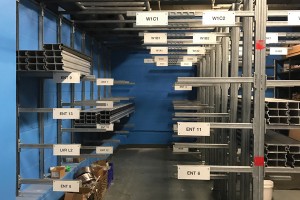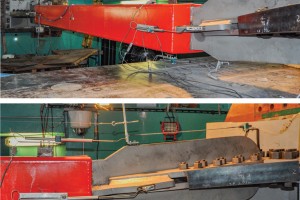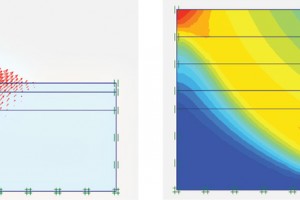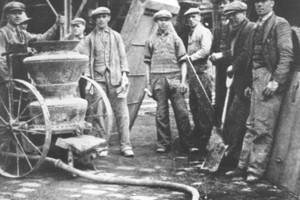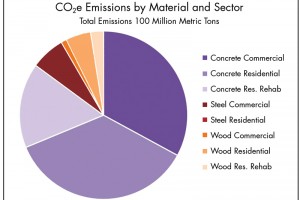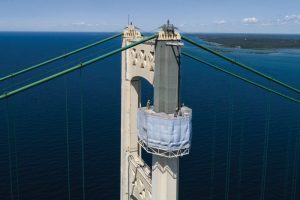Media portrayal of artificial intelligence has been all about a dystopian future and robots. Artificial intelligence was once deemed a figment of scientific imagination, only seen in the characters of futuristic fiction movies. But, as time passed, theoretical and technological developments in computation have normalized artificial intelligence, whether it is Alexa playing your favorite podcasts, Nest fine-tuning your optimal comfort zone, or Siri responding to your questions. Workplace advancements in the AEC profession saw their beginnings with BIM. Still, we have come to realize that revolutionizing the way we draw barely scratches the potential of artificial intelligence in our industry.
…Review Category : Articles
Ways to Ensure Deployed Flood Barriers Work
Imagine spending millions of dollars on flood protection but, when a storm approaches, the deployable flood barriers cannot be installed in time. Learning from experience and adding some common sense helps reduce the risk of improperly deploying flood barriers. Storage, maintenance, and deployment execution are the primary considerations for barrier selection and must be vetted fully during preliminary and final design to reduce operational challenges. Labeling and storing components in a readily accessible position and having deployment plans that are well thought out promote the flood mitigation system’s overall success. Deployment-related risks can be decreased by minimizing the number of components assembled in the field.
…The Real Failure Mode
A young researcher studying Buckling Restrained Braces (BRB) once commented that a change made in their design had improved the failure mode such that fatigue of the yielding core no longer controlled the BRB’s performance. Upon investigation, the change had simply created a failure mechanism that developed BEFORE the steel would have fatigued had the change not been made. The fatigue life of the BRB had not changed – the rest of the system simply no longer had the capacity to survive until fatigue limits would have been reached. Thus, what was thought to be a benefit, was not. But the point is an important one.
…Gentle slopes are usually stable. As the slope’s inclination angle increases, the risk of failure increases accordingly. This can be attributed to the instability of the soil mass when the geometry results in the soil strength being unable to provide adequate support and its natural tendency to achieve stability and equilibrium. Failures in slopes usually occur in the form of soil movement, where the unstable mass topples or slides downwards or sideways to achieve stability.
…Shotcrete has been in active use since 1907, predating the introduction in 1913 of central plant batched ready-mix concrete. With its evolution over the last 100+ years, shotcrete has become ubiquitous for concrete delivery on today’s construction sites. So how has shotcrete evolved over the last century of use?
…Reducing Embodied Carbon through the SE2050 Commitment
In response to the scientific consensus that man-made emissions are driving warming global temperatures and other climate changes already causing havoc worldwide, the structural engineering community has created a voluntary program called the SE 2050 Commitment designed to reduce the emissions associated with building structures. This article shares details about the program, what’s driving it, its overall goals, and how structural engineers can participate.
…Avoid These 7 Mistakes To Best Propel Employees Post-Pandemic Growth
The Covid-19 Pandemic has been life-changing and life-altering since its stronghold took reign early in 2020. A work-from-home approach became the norm, and many professional industries wrestled with keeping employees in or away from the office. As a result, career evolutions (or stagnation) have run rampant over the past 12-18 months. Without taking intentional time to pause and record the impacts on one’s life, employees have ridden the COVID-19 wave and need introspection on what the necessary steps forward look like.
…Structural engineers make ethical choices every day. Many decisions are engrained in engineering practice and become second nature, such as ensuring the safety of the public through sound design and engaging in honest business practices. In addition, engineers work to ensure equitable and inclusive work environments and uphold professional codes of ethics. We do our best. But is that good enough?
…The Mackinac Bridge or “Mighty Mac” is a 5-mile-long suspension bridge that connects Michigan’s Upper and Lower Peninsulas. The bridge crosses the Straits of Mackinac, the waterway connecting Lake Huron and Lake Michigan. It opened in 1957 and is the third-longest suspension bridge in the world – the longest in the Western Hemisphere.
…Like many in this COVID moment, I have reflected on life, pre- and post-pandemic. I have come to realize that, were it not for the particularly brutal, televised killing of George Floyd at the hands of law enforcement, I would not be the Inaugural Chair of SEI’s Diversity, Equity and Inclusion Committee. It was a personal and galvanizing call to action born out of my trauma that grew into a need also to be accountable as a professional.
…

